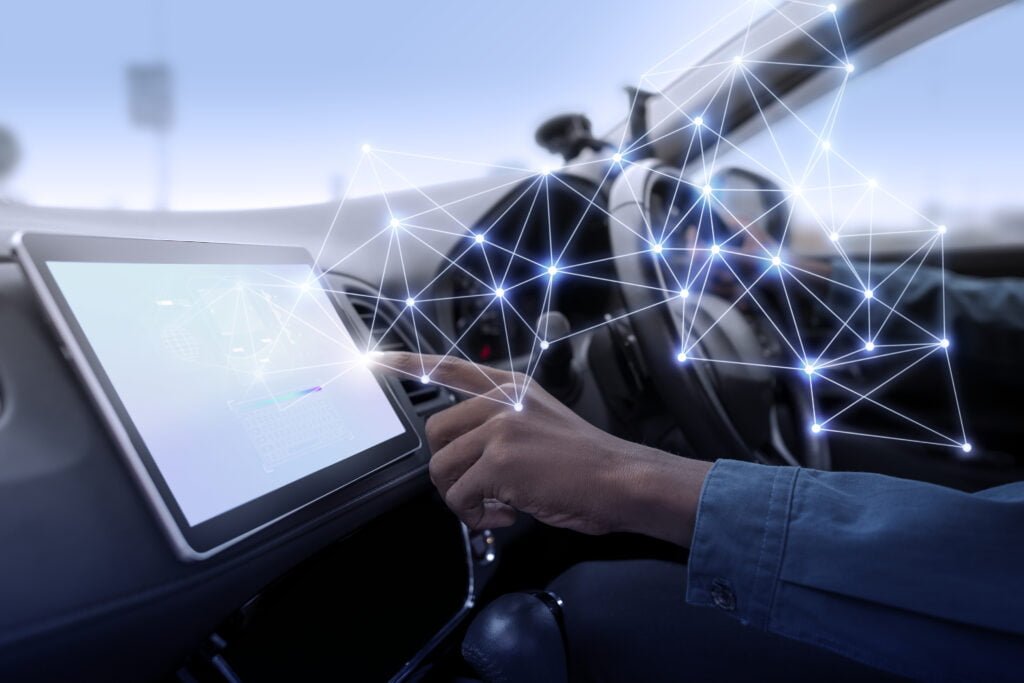The concept of autonomous vehicles has evolved into a real-world reality, set to alter transportation. Modern engineering, complex algorithms, and a variety of sensors are used by these self-driving vehicles to navigate and run autonomously. The development of fully autonomous vehicles places greater and greater demands on hardware that can manage the enormous processing demands of such intricate systems.
In the area of autonomous cars, Field-Programmable Gate Arrays (FPGAs) have become a game-changing technology. Flexible integrated circuits (FPGAs) allow for highly adaptable hardware implementations since they may be reprogrammed after production. They are suited for real-time applications due to their parallel processing capabilities, low latency, and power efficiency, which makes them a possible answer to the computing issues faced by autonomous driving systems.
In this article, we examine how FPGAs can be used for path planning, control, object identification, and sensor data preprocessing in order to enable better transportation. We also examine the benefits and drawbacks of FPGA integration in autonomous vehicles and examine potential developments and trends in this fascinating and disruptive field.
FPGA Applications in Autonomous Vehicles
FPGAs (Field-Programmable Gate Arrays) play a crucial role in the development of autonomous vehicles, enabling various essential functionalities that are critical for their safe and efficient operation. With their unique architecture and hardware reprogrammability, FPGAs offer several advantages that make them well-suited for specific applications in autonomous driving systems. Let’s explore some of the key FPGA applications in autonomous vehicles:
A. Sensor Data Preprocessing:
1. Role of sensors in autonomous vehicles:
To understand their environment, autonomous cars use a variety of sensors, including LiDAR, radar, cameras, and ultrasonic sensors. To make wise decisions, the enormous amounts of raw data produced by these sensors must be processed and combined in real time.
2. Real-time data processing challenges:
Autonomous driving requires real-time data processing because it lets the vehicle react quickly to dynamic changes in the environment, such as spotting pedestrians, other cars, and obstructions in the path.
3. FPGA’s role in sensor data fusion and filtering:
FPGAs are excellent at parallel processing, which makes them perfect for sensor data fusion, which combines data from several sensors to produce a thorough picture of the environment around the vehicle. FPGAs can also effectively filter and process sensor data to lower noise and boost accuracy, enabling the autonomous system to make judgments with confidence.
B. Object Detection and Recognition:
1. Importance of accurate object detection in autonomous driving:
Identifying and tracking different objects in its environment, such as people, cyclists, other cars, traffic signs, and traffic lights, is a vital task for an autonomous vehicle.
2. Utilizing FPGAs for efficient and high-speed object recognition:
For object detection methods like convolutional neural networks (CNNs), FPGAs can be configured to implement specialized hardware accelerators. Faster and more energy-efficient object recognition is made possible by these hardware accelerators, which carry out computations in parallel.
3. Implementing neural networks on FPGAs for computer vision:
The ability to create unique neural network designs suited to the particular needs of the autonomous driving system is provided by FPGAs. Deep learning models can be efficiently run on the hardware by utilizing FPGA’s parallel processing capabilities, improving real-time object detection performance.
C. Path Planning and Control:
1. Overview of path planning algorithms in autonomous vehicles:
Path planning involves computing a safe and optimal trajectory for the vehicle to follow, considering the dynamic environment, traffic rules, and the vehicle’s capabilities.
2. FPGA-based control systems for precise and real-time decision-making:
Hardware-based control systems that perform path-planning algorithms quickly can be created using FPGAs. This lets the car react swiftly to changing circumstances and make modifications, resulting in a comfortable and secure ride.
3. Handling complex calculations and algorithms on FPGAs:
Path planning often involves complex mathematical calculations and algorithms. FPGAs can efficiently perform these computations in parallel, significantly reducing the time required for decision-making.
Performance Advantages of FPGAs in Autonomous Vehicles
FPGAs (Field-Programmable Gate Arrays) offer several performance advantages that make them a compelling choice for integration into autonomous vehicles. These advantages address critical requirements for efficient and reliable processing in real-time, contributing to safer and more capable autonomous driving systems. Below are some of the key performance advantages of FPGAs in autonomous vehicles:
1. Low Latency and Real-time Processing:
- The ability of FPGAs to handle data with exceptionally low latency is one of its most important advantages. FPGAs are made to carry out operations concurrently, in contrast to conventional CPUs and GPUs, which carry out instructions sequentially.
- FPGAs can process numerous jobs at once thanks to their built-in parallelism, which shortens response times. Low latency is essential for speedy sensor data processing, object detection, and decision-making in the context of autonomous cars to ensure that the vehicle can react quickly to shifting road conditions and potential threats.
2. Power Efficiency and Thermal Management:
- Electrical power is used by autonomous vehicles, therefore minimizing power consumption is crucial to increasing the vehicle’s range and lowering operating expenses.
- As a result of its flexibility in configuration to meet particular processing requirements, FPGAs are renowned for their power efficiency. Due to its ability to dynamically reconfigure, the FPGA uses less power than an ASIC (Application-Specific Integrated Circuit) with defined functions by only activating the circuitry that is necessary.
- Furthermore, activities can be finished more quickly thanks to the parallel processing capabilities of FPGA, which results in less power being used than with conventional sequential processing.
- Additionally, because FPGAs use less power, they generate less heat, which makes it simpler to control their temperature inside the cramped quarters of an autonomous car.
3. Flexibility and Customization:
- In order to adapt to changing traffic circumstances, legal requirements, and technological advancements, autonomous driving systems frequently need constant upgrades and improvements.
- FPGAs have a distinct advantage in this situation since they can be quickly reprogrammed or changed. Because of its adaptability, FPGA-based hardware may be updated and customized by makers of autonomous vehicles without having to physically replace it, which reduces the time and expense of making hardware changes.
- FPGA customization also makes it possible to customize hardware accelerators for particular algorithms, such as object identification and path planning, leading to the targeted jobs’ performance being maximized.
4. Hardware Parallelism and Acceleration:
- FPGAs were created expressly to take advantage of parallel computing, which is ideal for processing enormous volumes of data in real-time. The ability to analyze many data streams concurrently through parallel processing significantly improves system performance.
- The perception and decision-making abilities of autonomous vehicles can be improved by using FPGAs to speed up computationally demanding activities like sensor data fusion, image recognition, and machine learning algorithms.
5. Deterministic Timing and Predictable Performance:
- Autonomous vehicles must prioritize safety, and FPGA-based systems provide predictable performance and deterministic timing.
- For important processes, FPGAs offer stable and repeatable timing, in contrast to traditional processors, which could experience erratic delays because of shared resources or caching methods.
- This determinism ensures the autonomous vehicle’s control system operates dependably, lowering the possibility of timing-related system failures.
Challenges and Limitations of FPGA in Autonomous Vehicles
Field-Programmable Gate Arrays (FPGAs) offer significant advantages in enabling smarter transportation through their parallel processing capabilities and hardware acceleration. However, like any technology, FPGAs also face specific challenges and limitations when applied to autonomous vehicles. Addressing these challenges is crucial for ensuring the safe and effective integration of FPGAs in autonomous driving systems. Here are some of the key challenges and limitations:
1. Design Complexity and Development Time:
- Hardware description languages (HDLs), such as Verilog or VHDL, demand specialized knowledge and proficiency when implementing FPGA-based solutions.
- The development process can be labor-intensive and complex, and it may take several iterations to produce the needed functionality. For FPGA-based autonomous car systems, this complexity can result in increased development costs and a longer time to market.
2. Verification and Safety Assurance:
- To safeguard the safety of passengers, pedestrians, and other road users, autonomous cars must conform to strict safety regulations. Due to the parallel nature of the technology, confirming the accuracy and security of FPGA designs can be difficult.
- Comprehensive verification procedures are needed to make sure the FPGA functions as intended in all conceivable situations and settings. In comparison to conventional software-based solutions, safety certification for FPGA-based systems could be more difficult.
3. Cost Considerations and Scalability:
- The overall cost of autonomous car systems may increase if FPGAs are used instead of off-the-shelf processors.
- Costs may come down as FPGA technology develops, although initial implementation costs may still be a problem for businesses. Due to the specialized nature of FPGA design and production processes, scaling FPGA-based solutions to mass production can be difficult.
4. Power Consumption and Thermal Management:
- In autonomous vehicles, power economy is essential to maximizing range and battery life. Even if they have superior performance, FPGAs may use more power than CPUs or ASICs that are specifically designed for a given task.
- In a small, restricted space like a car, controlling power usage and heat dissipation can be difficult. To ensure the reliable and effective operation of FPGA-based systems, effective thermal management solutions are required.
5. Flexibility vs. Performance Trade-offs:
- FPGAs’ reprogrammability, which enables upgrades and improvements after deployment, is one of their main advantages. However, flexibility and performance trade-offs may be necessary for designing FPGA designs for certain workloads.
- The flexibility to adjust to changing requirements may be hampered by the need for more specialized and fixed configurations in order to achieve the best performance.
6. FPGA Integration with Existing Systems:
- Other components may need to be redesigned or modified in order to integrate FPGA-based solutions into current autonomous vehicle designs. For flawless operation and data transmission across various subsystems, compatibility with current hardware and software platforms must be carefully taken into account.
7. Long-term Maintenance and Support:
- It can be difficult to maintain and support FPGA-based systems over the lifecycle of autonomous cars. As technology develops and FPGA models become outdated, it becomes important to guarantee the long-term availability of replacement parts or upgrade the FPGA designs.
Conclusion:
In conclusion, the use of FPGAs in autonomous vehicles opens up a world of innovative possibilities for better mobility. While FPGAs offer real-time processing and high performance, issues with design complexity, cost, and safety need to be carefully considered. We can clear these barriers and fully realize the potential of autonomous vehicles with coordinated efforts and breakthroughs in FPGA technology, making our roads safer and more effective than ever.


![What is FPGA Introduction to FPGA Basics [2023] computer-chip-dark-background-with-word-intel-it](https://fpgainsights.com/wp-content/uploads/2023/06/computer-chip-dark-background-with-word-intel-it-300x171.jpg)









